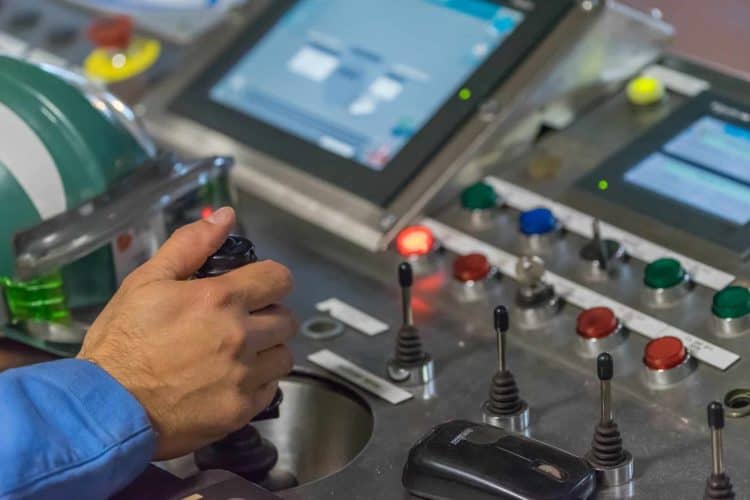A hallmark of the Fourth Industrial Revolution is that automation supported by interconnectivity, machine learning and real-time data processing will be ubiquitous. Yet, automation is not something new to manufacturing; it is synonymous with the sector.
Harkening the concept back to yesteryear when Henry Ford transformed automobile production – a process which, back then, was lengthy and labour-intensive – to an automated process that placed people with specific roles along the assembly line.
Such a change, at the time, was transformative.
Fast forward decades later, we stand at the precipice of a new industrial era, one now beset with new demands and challenges.
Overall, the value-added output manufacturing sector has been declining over the past couple of decades. While it experienced growth in the early parts of 2019, the global purchasing manager’s index (PMI) dropped later in the year due to the pervasive issue of filling critical jobs.
While 2020 began with some optimism, the COVID-19 outbreak pegged back the already volatile sector.
Disruptive factors have taken a toll on manufacturing output. While calls for the sector to be a disruptor itself have emerged amid the conversations surrounding Industry 4.0, the current state of the global economy is hastening the need for real transformation.
To enact this change, we must make our factories smarter via increased, thorough digitalization.
Fostering holistic digitalization
Digital transformation can make factories, supply chains and logistics dramatically more responsive, productive and efficient. It allows the process of manufacturing to produce, move and run more lean and agile than ever before.
This, however, is just a topline view held by many manufacturing stakeholders and such a rough understanding can make digitalization hard to implement at a practical level.
This is not to say that the industry has not seen meaningful digitization. Leading manufacturers understand the benefits of going digital and have implemented new technologies to make their production lines more efficient.
Even then, the remit of digitalization is limited to just one or two applications, such as automation and data analytics.
To make digitization more effective, its application needs to be more holistic; it must be broadened to also encompass business intelligence and cloud computing, and for them to be delivered over a secure and reliable high-performance network.
Firstly, business Intelligence allows for predictive decision making, which maintains quality and improves situational awareness for devices and processes, from individual machines to production lines, and the entire factory.
This helps manufacturers quickly adapt to evolving customer demands, improve productivity and safety as well as drive higher revenues.
Intelligence then can be supplemented with automation and analytics. Through industrial internet of things (IIoT) and deep analytics from data gathered from sensors, devices and machines can provide “intelligent agility” – which allows operations to be streamlined operations with “zero-touch” capabilities.
This, in turn, optimizes and raises the efficiency and safety of complex systems and processes.
Bringing it to the next level is cloud computing and new edge cloud platforms, as they can enhance data processing while making innovation more affordable and achievable. For instance, the processing and analysis of real-time operational data can create digital twins that can quickly design, test and validate changes to production equipment and line configurations.
Cloud computing allows for the rapid and lightweight formation of prototypes, in addition to agile adjustments to manufacturing operations, before moving to online production. This helps optimize times and implement innovations more quickly to maximize competitive advantage.
Reliability via state-of-the-art networks
While manufacturers can have the technologies mentioned above in place, realizing their fullest potential requires a secure, reliable, high-performance network. This is as it can provide the sheer capacity needed in the digital manufacturing environments of not only today but to meet evolving challenges.
Reliable wireless networks are vital in enabling fast and flexible adaptations of factory operations while delivering dedicated, universal broadband connectivity. Apart from supporting a broad range of communication and information exchange, having a dedicated network provides factories with more data privacy and security for business-critical operations.
Existing wireless technologies such as Wi-Fi cannot support the futureproofing of smart manufacturing ecosystems. Instead, manufacturers must move towards 4G, 4.9G and 5G as a connectivity mechanism to support the transformation.
This is where the role of communication service providers (CSPs) will prove critical; they can partner with manufacturers to help implement a reliable, secure and performant private wireless network, which will be constantly evolved in parallel with emerging technologies. For CSPs seeking diversification, this is a managed services opportunity.
Last year, we put the private, high-performance wireless network to the factory floor test at our Oulu factory in Finland.
We utilized our private (4.9G/LTE) wireless networks for secure and reliable connectivity for all assets within and outside the factory, IoT analytics running on an edge cloud, and a real-time digital twin of operations data.
The factory, which produces 1,000 4G and 5G base stations daily, generated significant annual improvements – including more than 30% productivity gains, 50% savings in time of product delivery to market, and millions of Euros in yearly cost savings.
Transforming to weather challenges
The global smart manufacturing market already comprises 6.3 million worldwide and by 2023, billions of digital factory connections will be wireless. Most of these connections will be entirely new and supported by new wireless infrastructure, namely, private LTE and 5G.
Even before the COVID-19 situation escalated, a survey of 600 manufacturing companies from across the globe assessed how they will invest to digitally transform. While it is too soon to predict the pandemic’s effect on the findings, they inform us how manufacturing can become more flexible and resilient.
If anything, it can potentially better equip them to respond to future systemic challenges, making the sector robust and flexible enough to become the lynchpin of the next industrial era.



